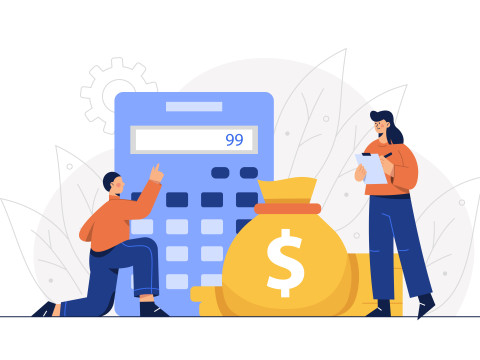What's a Good Employee Utilization Rate? | Agency Guide

A good employee utilization rate sits at a range of 70% - 90% for production level teams, and 60% - 80% for management level teams.
As an agency professional, you've probably heard the term "employee utilization rate". You have a general understanding that it's the productivity level of individual employees. But how important is this data to an agency? In this guide, we'll cover everything you need to know about employee utilization rate, how it's calculated, what a good utilization rate looks like, and key strategies for optimizing an agency's employee efficiency.
What is Employee Utilization Rate?
Not to be confused with capacity utilization rate, which is the average utilization rate of entire organizations. Employee utilization rate refers to the percentage of available time employees spent on billable tasks / projects. In other words, it's a measure of how efficiently your agency is using its employees.
For example, if someone works 40 hours a week, but only 30 of those hours are spent on billable client work, their utilization rate would be 75%.
It's important to note that the employee utilization rate only takes into account billable work. It does not take into account non-billable activities such as training, administrative work, and vacation time.
The ultimate goal of optimizing utilization is to maximize your agency's billing efficiency. You want to make sure that you bill enough to make a reasonable profit margin and cover overhead costs, such as salaries.
Employee Utilization Rate Formula
Calculating employee utilization rate is pretty straightforward. Simply divide their billable time by their total available time.
In mathematical terms, to calculate employee utilization rate, use the formula:

Employee utilization rate = (Total billable hours / Total available hours) x 100
What is a Good Employee Utilization Rate?
A good utilization rate depends on several factors such as industry and type of work. For an agency, you should aim for 70-90% at the production level and 60-80% at the account management level.
Note that the goal is not to reach 100%. Very high utilization rates can be unsustainable in the long run. People need time to rest and recharge, and constantly working at full capacity can lead to negative effects such as burnout.
If you feel that your team or employee is leaning towards an unsustainable utilization rate, you may want to learn more about ways to reduce employee churn rates.
On a final note, senior-level positions tend to be based more on performance quality, therefore often seen with lower utilization rates.
Optimal Utilization Rate Formula
If you want to calculate the ideal utilization rate for your specific industry, or if your agency has a unique organizational structure, you can use the formula below:

Optimal utilization rate = (Resource costs + Overhead + Profit margin) / Total available hours
What is a Healthy Utilization Rate?
Based on the data mentioned above, the ideal utilization rate (average) for a healthy team would sit at 75% with a deviation of ±5%. This keeps the team working at good productivity levels while still at a safe distance from possible burn outs.
Employee Billable Utilization at Professional Services Organizations

Why Employee Utilization Rate Matters
Employee utilization rate is a key metric for agencies because it directly impacts profitability. The higher your utilization rate, the more billable work you are completing, which means more revenue for your business.
A high utilization rate can signal that your team is working efficiently and effectively. On the other hand, a low utilization rate could indicate that there are issues with management, staffing, or productivity.
Knowing your utilization rate also helps optimize team workloads. Being aware of each employee's total hours, whether it's per day, week, month, or project, can help trigger active responses from management to enhance internal growth and improve work schedules.
Factors That Affect Employee Utilization Rate
Several factors can impact employee utilization rate, including:
1. Project Scope and Complexity
Projects that are larger or more complex may require a lot of resources, which can complicate the work schedules of individual team members. This, if left unchecked, can lead to unnecessary overtime and poor resource management.
2. Employee Skillset
If an employee has a specialized skillset that is in high demand, they may be pulled onto non-billable projects such as training, which can impact their utilization rate.
3. Staff Volume
If your agency is overstaffed, it may be difficult to keep everyone fully utilized. On the other hand, if you're understaffed, team members may be overworked and struggle to meet project targets.
4. Employee Engagement
Employee engagement is directly proportional to utilization rate, meaning that, as engagement increases, so does utilization rate. In fact, a Gallup study has found that employee engagement directly correlates to productivity (21% increase) and profitability (22% increase).
5. Employee Efficiency
Unlike productivity, employee efficiency is indirectly proportional to utilization rate. The more efficient they are, the less time they require to finish a task. So, when a worker is showing lower utilization rates, it may actually be a good thing.
An efficient member uses less time per task, meaning that increasing their utilization rate is as simple as giving them more tasks or setting aside those extra time for quality improvement.
Strategies to Improve Employee Utilization Rate
If your agency's utilization rate is lower than you'd like it to be, there are several strategies you can try to improve it:
1. Optimize Project Management
Efficient project management can help ensure that team members are working on the right tasks at the right time. Consider implementing tools like a project management software or a time-tracking app to help streamline workflows.
2. Improve Employee Productivity
There are many ways to improve their productivity, such as providing training or coaching, setting clear goals and expectations, and minimizing distractions in the workplace.
Hiring or directing project managers in the right direction can be an efficient method of essentially training everyone under their umbrella.
3. Hiring or Outsourcing Tasks
If your agency is consistently understaffed, it may be time to hire new ones or outsource work to freelancers to help balance workloads.
4. Prioritize Billable Work
Make sure that your team is focusing on billable work as much as possible. This may mean saying "no" to non-billable work or finding ways to complete non-billable work more efficiently.
How to Track and Measure Employee Utilization Rate
Tracking employee utilization rate is essential for identifying areas for improvement and ensuring that your team is meeting its targets. Here are some tips for tracking and measuring utilization rate:
1. Use A Resource Scheduling Software
Investing in a resource scheduling software like Smartoo is an effective way to track and measure utilization rates. These tools can provide real-time data on employee availability, workload, and project timelines, allowing you to make informed decisions about how to effectively schedule work hours.
2. Use A Time-Tracking Tool
A time tracker can help you keep tabs on how much time workers are spending on different tasks. Look for software that allows you to categorize time as billable or non-billable hours. A good tracker should be able to help optimize your projects' capacity utilization rate.
3. Generate Employee Insights from Projects
Analyzing data and generating insights from completed projects can give you a better understanding of your current utilization rate. Look for patterns in project completion times, billable hours, and availability to identify areas for improvement.
Employee insights can be made by manually gathering and interpreting project data or through a business insight tool.
4. Set Utilization Targets
Setting utilization targets can help ensure that your team is working towards a specific goal. Make sure that targets are achievable but challenging, and communicate them clearly to your team.
Remember that employee utilization is a balancing act. Ensuring that it doesn't fall too low that productivity is affected, or climb too high that mental health is sacrificed.
Tools to Help with Employee Utilization Rate Tracking
There are many tools available to help with utilization tracking. Here are a few examples that you might consider:
Toggl
Toggl is a time-tracking app that allows you to track billable and non-billable work, create reports on them, and analyze its data.
Smartoo
Smartoo is an agency tool for planning projects, scheduling resources, and gathering business insights. It’s a tool that is focused on optimizing the workloads of agencies and other organizations that are primarily projects-based.
Ticktick
Ticktick is a task management tool that offers project collaboration features, helping you track tasks in a to-do list-style format.
Need more work tools? Check out our article regarding the 100+ remote work tools for productivity.
Common Mistakes to Avoid When Calculating Employee Utilization Rate
When calculating employee utilization rate, there are several common mistakes that you should try to avoid. These include:
- Not Accounting for Non-Billable Time
- Make sure that you're only including billable time when calculating utilization rate. Non-billable time, such as vacation or training, should be excluded.
- Failing to Consider Project Scope
- Remember that larger or more complex projects may require more resources, which can impact individual utilization rates.
- Ignoring Employee Skillsets
- If an employee has a highly specialized skillset, they may not be able to work on as many billable projects as someone with a more general skillset.
Conclusion
Employee utilization rate is an important metric for agencies looking to maximize team efficiency and improve profit margins. By aiming for a good rate, tracking metrics, and implementing smart strategies, your agency can work towards creating a more effective workforce.
Remember to avoid common mistakes such as not factoring in skillsets and including non-billable hours in the computation, and use tools like resource scheduling software, time tracker, or project management software to help streamline workflows and optimize resource utilization rate.
With a little effort and attention to detail, your agency can achieve better utilization rates and possibly higher-quality outputs for client projects.




